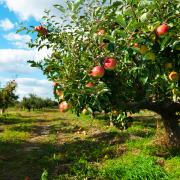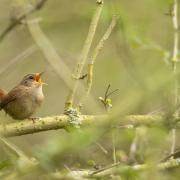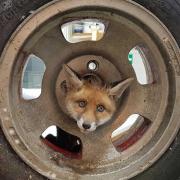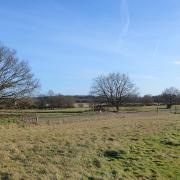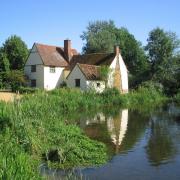As a county that has contributed so much to the nation, from producing famous sons and daughters to providing some of Britain’s best-loved holiday destinations, it’s hardly surprising that there are still elements of Essex’s history that remain largely unknown – like that of the Essex Pig. Did you know that Essex was once responsible for producing a thriving species of local pig?
Renowned for its beautiful black and white markings with a thick white stripe across the top of the shoulders, front legs and part of the belly, the Essex Pig was not an uncommon sight in the county until as late as the 1950s.
Popular with farmers for its general hardiness, compact but sturdy frame and good-natured attitude, the Essex Pig was especially popular in the years that surrounded the Second World War, owing to the fact that it retained all its natural aptitude to forage well. The pig itself has been in existence for several centuries, likely originating from unrefined breeds that existed on various farms around the county for generations.
Previously known best as the Old Essex, interestingly, the bloodlines were improved in the 19th century when Italian pigs were introduced into the breed by Charles Western, 1st Baron Western, who hailed from the county and whose family seat was at Rivenhall Place. After travelling in Italy, he decided to cross Italian boars with his Essex sows. As proof of the superiority of this refined bloodline, his pigs won first prize at the Royal Agricultural Show shortly afterwards.
It is perhaps difficult to understand why the breed declined so rapidly in the mid-20th century, especially in light of the fact that many smallholders were keen on this local species. Aside from the fact that many of the UK’s population of heritage breeds have been rapidly disappearing in recent times, in 1955 a special report was produced in the UK highlighting the best breeds for British farmers to focus on producing – and the Essex Pig was not one of those breeds. It was suggested that it would be better to focus on a smaller pool of different breeds rather than a wide array of swine varieties.

Almost overnight the Essex Pig suffered and its reputation for its various good qualities was quickly forgotten. Soon, the breed appeared to totally disappear and faded into the pages of old, dusty farming books of the previous century. In fact, the decline in population was such the breed was classified as extinct.
But this little piggy is as strong-willed as the county that formed it, and the Essex Pig still exists today. The Tamworth Pig is largely considered to be Britain’s rarest pig, with less than a few hundred breeding pairs still alive. However, there is a strong contest for that title as the Essex Pig has even fewer in existence. A few of the breed can be found in neighbouring Suffolk, where Jamie Oliver’s close friend Jimmy Doherty is raising a small population of the Essex Pig breed.
Another encouraging point to note is the fact that it was this local bloodline combined with the Wessex Pig that formulated the British Saddleback Pig, which retains the colouring of our own local breed. In 1967, the Saddleback Society was formed.
Although the British Saddleback is also classified as rare and endangered, it is heartening to see the bloodlines of the Essex Pig still running in today’s livestock. Certainly, the Essex Pig and its descendants play a very special role, not just in local history but in the UK’s heritage breeds of livestock.




